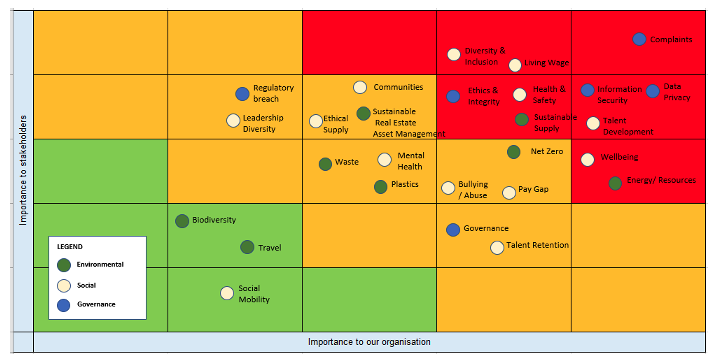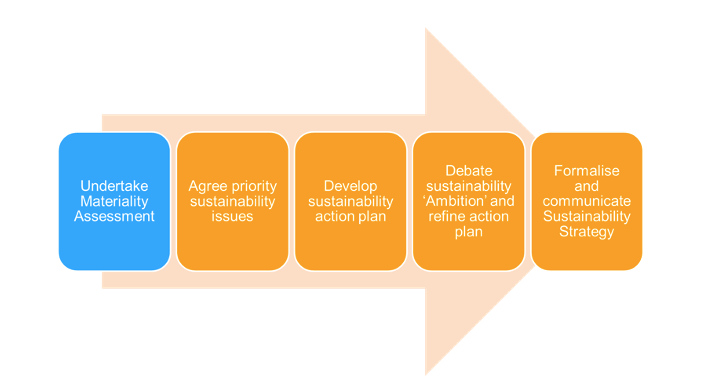Many organizations feel they need to do something to address their sustainability agenda, but where to start? To quote David Allen, “You can do anything, but not everything.”
Perform a Materiality Assessment
A useful tool to narrow priorities is a materiality assessment, where you consider who your key stakeholders are and what is most important to them. For a hotel, this likely includes guests, staff, local community, suppliers, lenders, and investors.

Management could start by brainstorming a broad list of sustainability related issues (broken down into Environmental, Social & Governance) and scoring them in terms of their own view of priorities, based on the company's strategic priorities. Through outreach, perspectives of different stakeholders can be captured. Sometimes it is not possible to engage directly therefore someone within the organization who is able to represent stakeholder views can act as a proxy in the short term. The outcome is a 3-by-3 grid with high, medium and low priorities for the organization and their stakeholders.
This simple tool does three things:
- It identifies the most important elements to focus on.
- It identifies the low-priority items, giving permission to do nothing about these for now, to optimize resource allocation.
- It provides a simple yet effective mechanism to communicate to stakeholders why specific choices are being made.
Sharing this assessment can generate valuable debate and create transparency.
Sustainability Strategic Planning
Having put the effort into producing a materiality assessment, the next stage is to step back and think ‘so what?’ This means identifying and agreeing on a set of priority sustainability issues to address.This will vary between organizations and will depend on the pressure from specific stakeholders. Typically, climate change is a key issue, but diversity, equity and inclusion may be equally important. It is important to make choices and focus limited resources on making a difference in a few key areas.
Having identified a handful of areas to target, the next stage is to develop action plans for each area with practical steps and timelines including having discussions about how far to go. There will be trade-offs and sustainability plans will compete for resources with other priorities. In some ways, integration is the solution. Make sure that sustainability issues are being addressed within future core strategic plans.

This will lead to debating the organization’s level of ‘ambition’ around sustainability. Typically, it is about aligning stakeholder views on why sustainability is important to the organization, what the pressures are to improve and how quickly you need to move forward. This allows the wide-ranging action plan to be refined and calibrated to the agreed level of ambition.
It can feel daunting to create a sustainability strategy and plan. Hopefully by following this structured process, you will have the information required to move forward. The strategy needs to capture and explain what is most important regarding sustainability to the organization and what it is being done about it. The trick is to keep it fairly concise and grounded in the practical steps that the organization is committed to take.
Vedika Jhunjhnuwala is a consultant with Horwath HTL, the world's largest and most experienced hospitality consulting brand. Alex Hindson is a partner and the head of sustainability at Crowe UK, a multinational professional services network.
